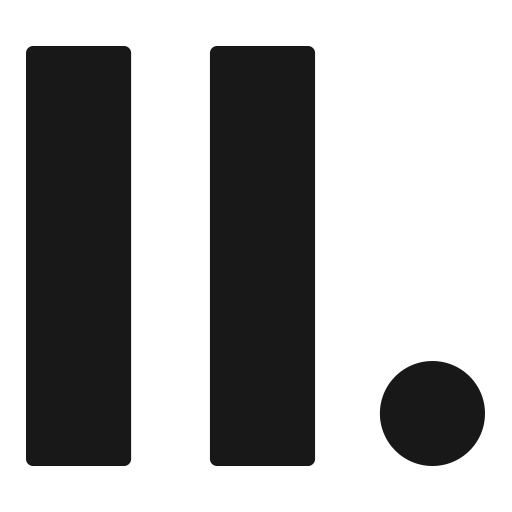Controllers Of Newsfeed
What kind of transparency and control do we need?
Data Controllers is a series of speculative design-based fictional future applications. It uses data visualization to illustrate potential social media issues resulting from improper self-data management, helping the public recognize these contradictions and prompting reflection.

Echo chamber
Currently, digital social media has become the primary source of information. However, it also fuels the spread of misinformation and biases. Personalized news feed algorithms cannot avoid bias; they prioritize user engagement over the accuracy of information. As a result, users only see content that aligns with their beliefs, a phenomenon known as the echo chamber effect or filter bubble.


Attention economy
Digital design, including UI/UX design, typically focuses on smooth and seamless experiences, but it deprives users of the ability to pause. In this context, the information flow dictates what users read, leaving no time for them to reflect.
Existing Solution: Increasing Transparency
Currently, the approach to addressing this phenomenon follows the principle of “Panopticism,” employing various interventions to increase transparency. However, this brings many corresponding issues: What is our actual goal when we say social media platforms need to become more transparent? Are there downsides to increased transparency? Much of the current discussion ignores or avoids these questions, focusing solely on the dichotomy between transparency and opacity.
As the saying goes, “Sunlight is the best disinfectant,” but the key question is: What kind of sunlight is appropriate without causing harm?

Design Theory
To address this question, the approach introduced here is speculative design, also known as future design or fictional design. It facilitates the exploration of possibilities and catalyzes relevant discussions by creating functional fictional scenarios of the future.
The uncertainty of the future is a key aspect of this project’s design. Different perspectives, ranging from optimistic to pessimistic, can lead to drastically different predictions about the future of social media. Therefore, it is essential to involve users from diverse backgrounds in the project to obtain a wide range of possibilities.

Research Methodology
This project is based on qualitative research and primarily includes two aspects:
1. Collecting and analyzing users’ social media content.
2. Organizing workshops to discuss concepts related to transparency for collaborative design.
After collecting the data, a UI prototype is created based on the data as an artifact/trigger. Audience members are guided to try the prototype, and then, based on the visualized data in the prototype, they speculate the dilemmas (situation puzzles), which triggers discussions about transparency.


Mapping and Analysis
In the early stages of the project, I conducted extensive collection and analysis of users’ social media content. The goal was to understand their perceptions of information flow and algorithmic recommendation mechanisms. I performed three types of mapping from different perspectives on social media platforms:
1. How does Twitter’s algorithm allocate personalized content to users?
2. How is content on Weibo influenced by friends?
3. How many ads on Instagram are received without awareness?

Interactive Poster
After completing the initial research, I used posters as “cultural probes” to gather audience responses. The goal was to see if people think about the relationship between social media transparency and content engagement, especially when ads become uninteresting due to privacy settings.
I displayed ads from three different platforms in order of their privacy relevance, from top to bottom. I asked the audience to cover content they considered sensitive with tracing paper. Then, I interviewed them to understand their thoughts. Some audience members noticed the connection between privacy and content, especially when they saw that the remaining ads were uninteresting.
First workshop
I designed and organized a multi-participant workshop, asking participants to analyze their social media usage through hand drawing.
The workshop was divided into three topics:
1. What social media platforms are on your phone? How would you categorize them?
2. Does the content pushed by social media match your memories and impressions?
3. What problems do you think exist, and what are the possible solutions?
The purpose of the workshop was to understand and collect the audience’s perceptions and expectations of social media transparency, using this information as a foundation for future settings.



Second workshop
The workshop began with “What if” questions, encouraging participants to list as many ideas as possible. Through discussion and voting, they evaluated ideas for their potential controversy, whether they tend to solve problems or trigger conflicts. The 3 most controversial ideas would form the basis for creating future scenarios.



Experiential Futures Ladder
After collecting enough materials, I used the Experiential Futures Ladder as a tool to transform abstract future concepts into concrete prototype concepts.

Wireframe & Visual
As a product of speculative design, I do not need the complete feasibility of the prototypes. Instead, I strive to infuse a future-oriented tone into the visual language while maintaining a certain level of credibility. To achieve this, I simplified the complexity of charts and user interfaces to enable quick recognition and judgment of information by the audience.

Final output
The project’s final outcome is 3 private data control Apps, each with unique functions. However, the users of these Apps are facing situations beyond their control.


Exhibition
The project ultimately sparked curiosity and engagement from many visitors. This interactive process turned the project into an interesting conversation piece, garnering a lot of positive feedback.





